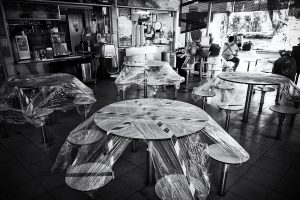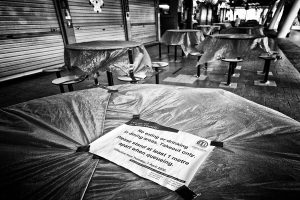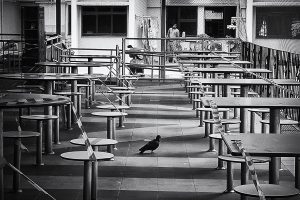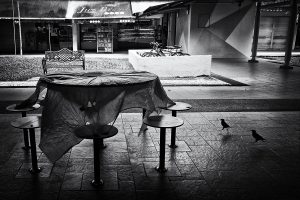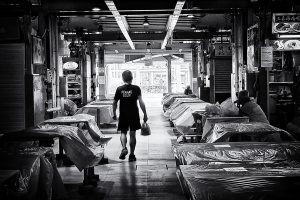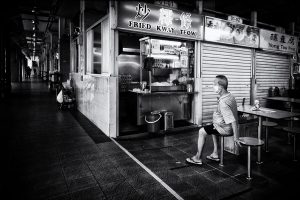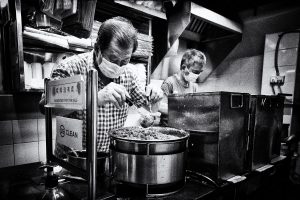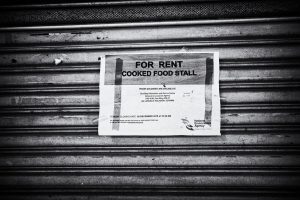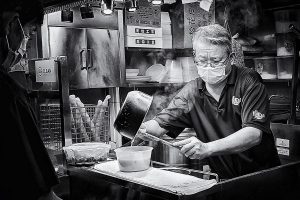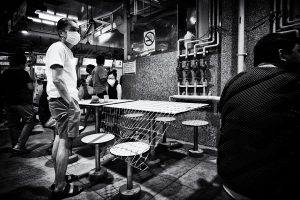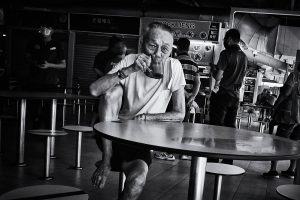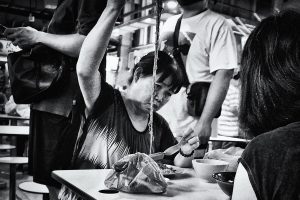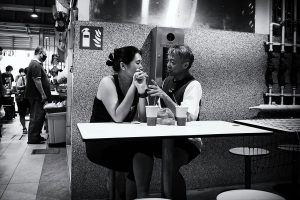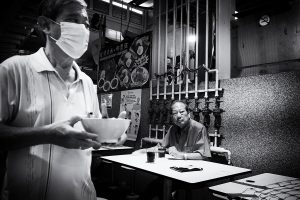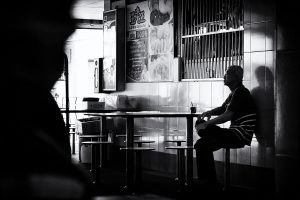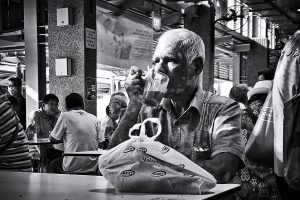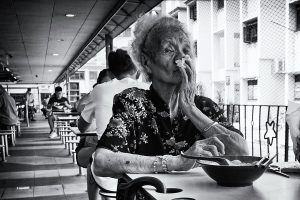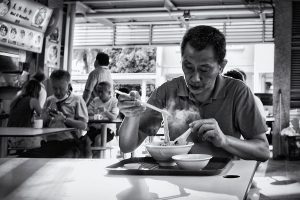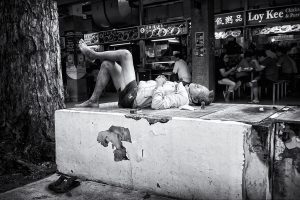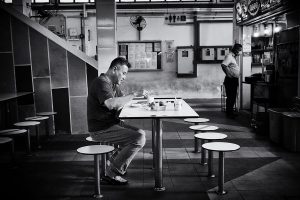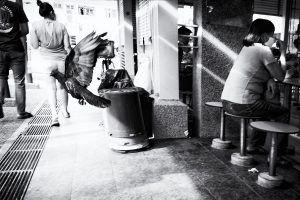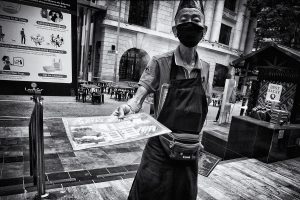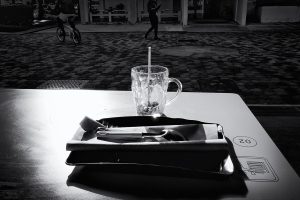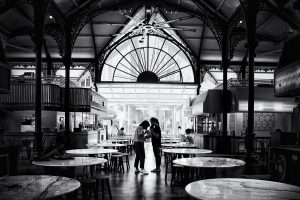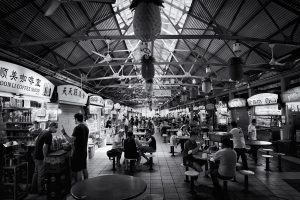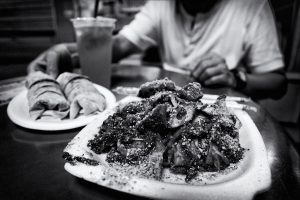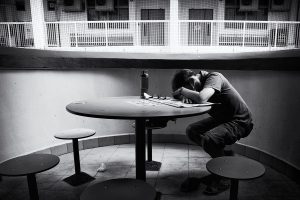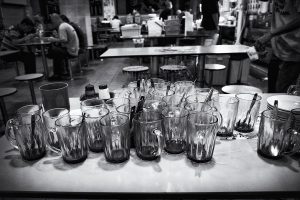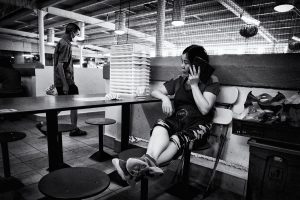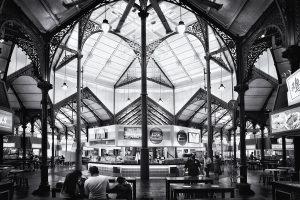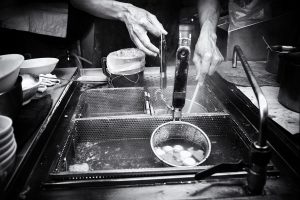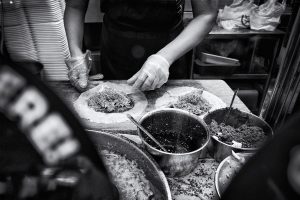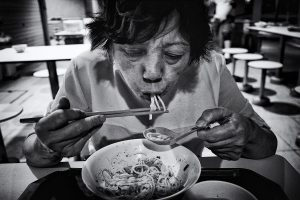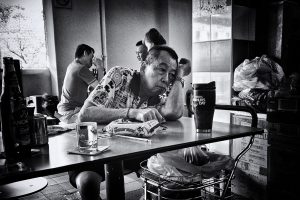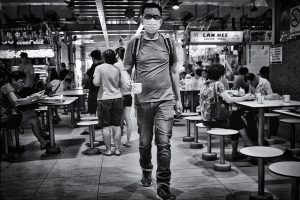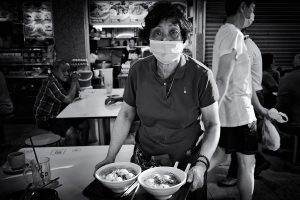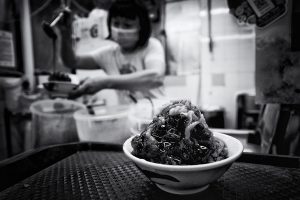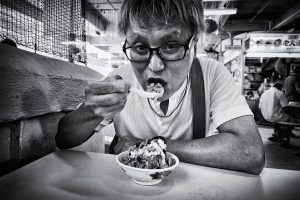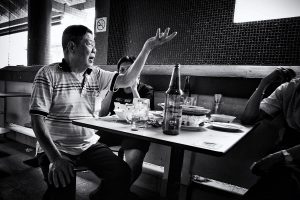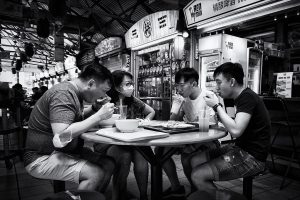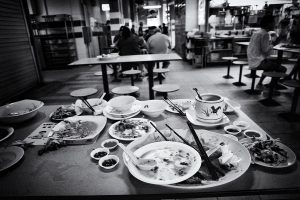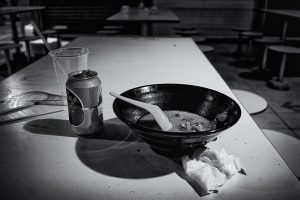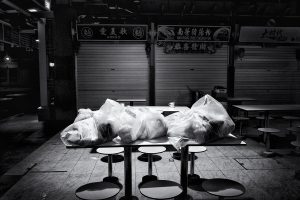FIGHTING FOR A BIRTHRIGHT
From the streets to feeding a nation
By Steven Yee
After 30 years of seeing the world behind a camera lens as a photojournalist and travel photographer, I have been driven to capture new images of familiar subjects from fresh perspectives. They give viewers new emotive experiences; often reverent, exhilarating or dramatic. This is what motivates all adventurous photographers.
My focus has been on the diverse cultures and colours of Asia. From Bali and Chengrai to Angkor Wat and Rajasthan and Mandalay to Shangri-La, I have captured moments that moved me. These snapshots are of people of diverse traditions, landscapes in all shades of hue and nature in its magnificent beauty.
Keenly aware that the face of Asia is rapidly changing in sync with the advancing economies of many nations, I embarked on capturing what might be lost to time to preserve them for future generations.
The outbreak of the Covid-19 pandemic in February 2020 caused me to pause to consider; what is so inherent in this part of the world that I had not considered previously: food. Like everywhere else in the world at the onset of the pandemic, people were rushing to markets and provision stores in a state of panic to stock up on daily necessities before the imposition of lockdowns. They began cooking meals at home while others who have never done so began to learn how to do so.
Looking deeper into this subject, I realised that food plays a central role in most cultures in Asia. It is not only at the centre of family and social activities, but in religious rites as well. There is the offering of food to deities and ancestor worship during auspicious days, especially during the festival of the Hungry Ghosts. Observed in Asia among those of Taoist and Buddhist persuasion, this festival lasts for a month during the seventh month of the Chinese Lunar Calendar and elaborate dishes are prepared for ghosts and spirits, including those of deceased ancestors.
For the living, the abundance of recipes across Asia is unlike anywhere else. There are many iterations of wheaten products, for example, bread, noodles, and dumplings, that are now enjoyed around the world. Then there are ingredients, from garlic, tofu and soy sauce to spices such as pepper and nutmeg, that have enriched cuisines from Europe and the Americas to Australasia.
In every country today Chinese, Indian, Southeast Asian and Japanese food have endeared themselves to diners on every continent. In Singapore, this food culture of Asia comes together in the melting pot of migrants who have settled on the island over the course of 200 years. Out of this emerged a blend of cuisines that is now the country’s heritage.
The defining moment for me to work on a black and white photo project came in April 2020 when the Circuit Breaker (Singapore’s version of lockdown) was imposed during the Covid-19 pandemic. My audience is Singaporeans in general, as they patronise hawker centres and potential tourists to Singapore who have been attracted by Singapore Tourism Board’s marketing campaigns on our hawker culture. Of all restrictions, the ban on dining-in at hawker centres stirred up the most emotive reactions. These huge public venues house scores of food vendors selling cheap quality food because eating out is a way of life Singapore that dates to country’s founding as a British trading outpost in 1819.
Going under one roof
Unique to the city-state, though, is the tradition of eating out. It began in the early days of Singapore’s founding as a British trading outpost in 1819, when the majority of the population were migrant workers. As there was hardly time to prepare meals, they turned to cheap and tasty meals from street food vendors for all their daily meals.
This demand gave birth to the itinerant street vendor who hawked Chinese, Indian and Malay food from containers that were either hand carried or pushed on wheeled carts. Dining on makeshift tables and chairs along five-foot corridors, back alleys and streets was commonplace and a hallmark of Singapore life for 150 years before a significant change occurred – the building of hawker centres all over the island.
Although such sheltered food centres were in existence since the early 20th century, they were few in number and did not accommodate every street hawker. It was only after Singapore gained independence as a sovereign nation that the drive to take them off the streets gained momentum in 1971. In housing scores of food vendors under one roof with clean and hygienic facilities, the goal was to prevent the spread of diseases from contaminated food and, with more married women joining the workforce, their role in feeding the nation took on a new importance. It moved the government to ensure there was a hawker centre that was close by to every household. Good, quality food at affordable prices at hawker centres gradually became synonymous with Singapore. These places in time also played a key role in connecting people of every station in life – from the ordinary folk to the wealthy.
The reputation of Singapore’s hawker centres over time also caught on with tourists and even foreign dignitaries, who made a beeline for these places to fill their stomachs. It is not surprising then, that they inevitably caught the attention of world-renowned chefs Jamie Oliver and the late Anthony Bourdain, who produced television documentaries about them.
From the street to Michelin star
Food is everything we are. It’s an extension of nationalist feeling, ethnic feeling, your personal history, your province, your region, your tribe, your grandma. It’s inseparable from those from the get-go. – Anthony Bourdain
With the world’s spotlight continuously on these humble street hawkers, it was only a matter of time before they gained international acclaim. It came in 2016, when the Michelin Guide awarded a Singaporean hawker “the world’s first (and cheapest) Michelin-starred street food” for his Hong Kong-style soya sauce chicken. It was the first of several that were subsequently bestowed on others like him.
Despite winds of change that swept the trade from time to time over the course of two centuries, there are many features that retain their original character and taste. Dishes like the venerable bak kut teh, or Chinese pork ribs soup that, in the beginning, provided a nutritious meat brew in the mornings for labourers before they toiled all day long carrying heavy sacks of goods over their backs from boats to godowns (warehouses), is a good example. The same can also be said of the Indian prata and Malay nasi lemak.
The dedication that goes into preparing and serving the dishes is also timeless. This is rooted in the handing down of recipes through successive generations of families, who operated their businesses the same way as their ancestors did. It is this dedication to preserve tradition in the food culture of Singapore that struck me as worthy of immortalising in images for future generations to treasure.
While Covid-19 nudged me towards this endeavour, it is by no means the entire story. The worry if food hawkers can survive the pandemic is only the latest to hit the trade. There were already concerns of its continued existence. Technology has already disrupted a slew of traditional industries, and engineers in China have created robots with artificial intelligence to prepare meals. They do away with the need for a cook and can even fulfil specific customer requests, such as adding more condiments.
And in Singapore, vending machines serving hawker food have also started making an appearance in many of the ubiquitous public housing estates. It coincides at a time when ageing food hawkers are facing difficulty finding successors to take over their businesses, as their children opt for careers in other industries.
The highs and the lows of this age-old institution that is deeply entrenched in the Singapore psyche dawned upon me. It deserved a photo documentary that can be preserved in its evergreen form for the benefit of future generations.
The high contrast B/W treatment
In photographing people in their natural environment, such as those working and patronising hawker centres, I am stepping outside of my comfort zone as a photojournalist and travel photographer. It poses many challenges, especially resistance and even violence from people who don’t want to be photographed.
Capturing people in close range without interrupting their natural state and mood is a challenge for any photographer. To record the events of my subjects at hawker centres as the Covid-19 pandemic unravelled from early 2020, my choice of tool is the stealthy mirrorless camera with a manual fixed focus lens, depending on Zone focusing. It is versatile enough to sling over the shoulder and take shots while holding a tray of food in one hand, and without the need to look through a viewfinder.
My photographic essay of four periods during the pandemic – before the virus outbreak, during the Circuit Breaker and Phase 1 and 2 of reopening the economy – reveals a story of human drama. There is the social context of the hawker centre, the focal point of interaction for the rich and poor, young and old, families and independents, and the able-bodied and disabled – all equal without needless hierarchies.
When the virus hit, rendering these places like deserts, the picture of birds that refuse to take flight tell the entire story of a nation backed into a corner. The scenes could have come off the reels of Steven Soderbergh’s Contagion, except this is real life in motion.
But in narrating this human drama, I follow the lead of the Henri Cartier-Bresson, whose 35mm Leica in his day gave him spontaneity and anonymity. As the great French photographer once advised, “A photograph is neither taken nor seized by force. It offers itself up. It is the photo that takes you. One must not take photos. ”
I hope my work offers hope, too. I cover the opening up of society in Phase 2, from the eyes of hawker centre patrons. After months of forced desertion, they are back at their top haunts, but cautiously. The men and women working tediously in their stalls breathed a sigh of relief. Once again, they are able see the joy of their patrons partaking the food they’ve prepared. That’s satisfying for all their toil. But this story is still unfolding for a nation that is holding up for emancipation of their birthright and I am not done telling it.
“In black and white there are more colours than colour photography, because you are not blocked by any colours so you can use your experiences, your knowledge, and your fantasy, to put colours into black and white.” – Anders Petersen
Before embarking on this project, I researched the work of a range of respected professionals. I eventually studied the techniques of three: The master of street photography, Henri Cartier Bresson (active years 1937-1975), the celebrated Daidō Moriyama (1961-present) and the unconventional Tatsuo Suzuki (2008-present).
Bresson, the pioneer of street photography, is the gold standard for documenting people and no one can undertake this genre without looking at his work. Daidō, though, influenced me significantly and his masterpiece, Nippon gekijō shashinchō, on the darker sides of urban life and the less-seen parts of cities, offered invaluable insights. Tatsuo’s aggressive style is also worth reviewing because although he received pushbacks from his subjects, he was able to produce exciting images.
All three are not on the same level of style and distinction but they share something in common: their photographs are almost exclusively black and white, a form I’ve always been attracted to and studied, even though the bulk of my work is in colour.
In documenting Singapore’s food birth heritage, I have taken this work a step further, giving it an emotive, dark, high contrast black and white treatment. There are many reasons for this. Chief among them is to emphasise the historical nature of the story I want to tell – that this industry has retained its key characteristics of feeding a nation since 1819, but especially over the last 50 years. And because of its evergreen nature that has lasted over two centuries, Using high contrast Black and white post processing, my objective is to create a déjà vu mood that will have the ability to evoke the identical emotions at any point in the future as it does today.
The environment is also ideal for the high contrast black and white treatment as my subjects consuming their meals, one of the few moments of each day their minds are fully in deep thought, display countenances that are emotive. In black and white documentary, the noise of many colours is also muted; the focus falls exclusively on the person. The lighting, both natural and artificial, at these cavernous venues, also offers opportunities to exploit shadows and silhouettes for dramatic effect.
I was pleasantly surprised with the results, as they met all my expectations and were close to having the effect that created a tense and sinister mood. It is challenging to photograph in a hawker centre environment, where everyone is busy going about their daily lives, while taking a short break to have a meal here. It is also not an Asian habit to engage in conversations with people they do not know, much less to be photographed by a stranger.
Covid-19 generated thousands of global images of gloom, but also of hope. There is a race to develop a vaccine to put a stop to the rising death toll that is pushing towards the one millionth mark. But it is keeping the world on edge. For generations to come the still and video images of this historical battle foisted on the human family will serve as reminders on the fragility of life and that armaments are not the only dire threat to it.
I have already documented the lowest point of the hawker culture during the Covid19 pandemic. I shall strive to continue to record its recovery. The challenges it faces are unprecedented as the majority of its key market, which is the entire Singapore population, struggles through recession and retrenchments. It has gained recognition from UNESCO, hence the interest in the culture will spike not only in Singapore, but internationally as well. The Internet, especially social media, has made this reach across boundaries possible. They are indispensable tools for photo documentaries.
I will be delving deeper into this documentary and will explore more areas that can tell more of the hawker centre story to help Singaporeans fully appreciate their birth right.
